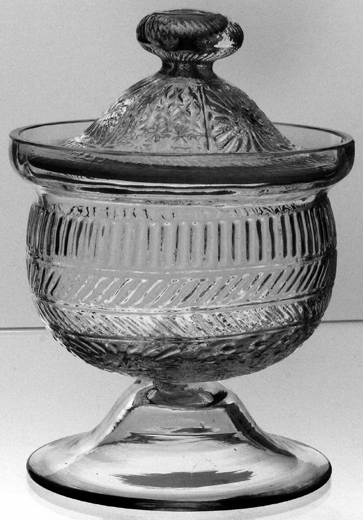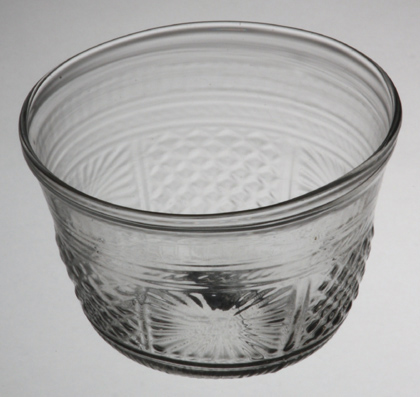To substitute or deceive?
An odd looking sugar bowl, bearing a distant family resemblance to the rare mold blown masterpieces of 1820s New England, was a welcome substitute for collectors of lesser means in the 1930s, and was put onto the market for that very purpose.

However, the same cannot be said for this bowl:

Mold blown tableware, known to collectors as Blown Three Mold, has rightly been one of the most heavily collected categories of early American glass since the 1920s. It includes objects such as decanters that were shaped and patterned in a single action in a hinged, multi-part, full-sized mold, the blower having little to do to complete them than shape and finish their lips. However, other forms were created as the blower continued to shape the patterned bubble, leading to hand formed vessels such as this bowl (or these), that retain the mold's pattern but often little of its form.
Both of these pieces came as surprises to collectors of the 1930s.
With its polished rim, terrible foot, and pressed lid, the sugar was clearly wrong to all but the most novice of collectors. The ever vigilant Ruth Webb Lee made sure her readers knew about it and other forms from the same source, illustrating a group of these modern Czech imitations in her regular column on Fakes and Reproductions in the American Collector.
However, it took 40 years for the bowl and related pieces to be formally exposed as fakes.
Before that, the bowl and other pieces made by a newly discovered blower — "Frederick Mutzer" of Southern New Jersey — were eagerly purchased for enormous prices by wealthy collectors, desperate to add new and exciting rarities to their collections. George McKearin recounted the exciting story of their discovery in the Magazine Antiques. He illustrated them in color photographs in the special limited first edition of "American Glass." William Howe paid nearly $3000 for his wisteria colored Mutzer sugar bowl around 1930 and it sold for $2900 when his collection was dispersed ten years later.
When they first entered museums, Mutzer pieces were displayed as treasures. Suspicions grew quickly. In the early 1970s a team from the Corning Museum of Glass gathered the surviving objects and compared them to authentic examples. The Mutzer pieces were from different molds than their genuine counterparts. They had fake wear. Their chemical composition was inappropriate for the period. They were demonstrably made to deceive.
That said, unlike reproductions, fakes add to the romance and lore of collecting, as fakers and charlatans do in science, the arts and religion. A famous fake, such as this bowl, has a unique value, all of its own.
Of course, it's easy to say this until the faker catches you out! So spread the word. When you spot a fake, point it out. Value it as a lesson learnt. Don't pass it on to deceive the next guy ... Instead, share the lore!

